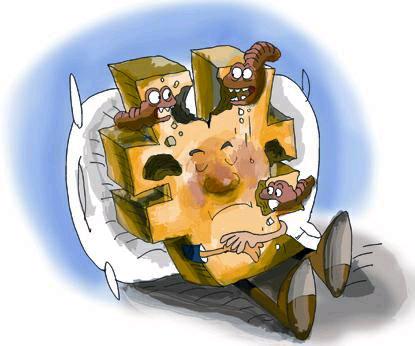The Pension Conundrum
2014-08-14ByWangJun
By+Wang+Jun
According to an auditing report on the national social security fund released by the National Audit Office(NAO), the 2.7-trillion-yuan($437.6-billion) pension fund suffered losses of 17.8 billion yuan ($2.88 billion) in 2013 because of negative interest rates.
Analysts think it is particularly important to maintain and increase the value of the fund through investment and prevent a payment crisis. The government should diversify risks in the pension system.
Devaluation risks
According to statistics released by the Ministry of Human Resources and Social Security(MHRSS) on June 24, by the end of 2013, the assets of the national basic pension insurance fund for urban workers had reached 2.99 trillion yuan($484.6 billion). Meanwhile, the assets of the national basic pension insurance fund for non-working urban residents totaled 312.4 billion yuan ($50.63 billion) by the end of 2013. Combining the basic pension insurance funds for all urban residents, at least 2.7 trillion yuan ($437.6 billion) in pension funds was standing idle at the end of last year.
The enormous idle pension funds could be likened to a huge apple pie cooling on the windowsill, tempting both the supervising authority and institutional investors.
Wang Zhongmin, vice Chairman of the National Council for Social Security Fund(NCSSF), said at a conference held on June 16 that the balance of the countrys pension insurance fund had surpassed 3 trillion yuan ($486.22 billion), and if the managing authority puts some of the fund into investment channels instead of putting the majority of the money in banks and treasury bonds, it will greatly increase capital flow in the market and bring huge changes to fund investment.
According to an annual report released by the NCSSF on June 30, in 2013, the countrys social security fund gained 68.6 billion yuan($11.12 billion), with an investment return rate of 6.2 percent, and the assets managed by the council had totaled 1.24 trillion yuan ($200.97 billion). The investment return rate was higher than the inflation rate of 2.6 percent in the same period, said the NCSSF.
The China Securities Regulatory Commission (CSRC) announced on June 13 that it will continue cooperation with the MHRSS and the Ministry of Housing and UrbanDevelopment, in advancing market-oriented operations of basic pension funds and housing provident funds, encouraging the investment fund management industry to participate in the designing of a market-oriented pension fund system.endprint
Earlier this year, the CSRC said it was accelerating the process of allowing long-term funds, including pension funds, insurance funds, and housing provident funds, as well as capital from Qualified Foreign Institutional Investor and Renminbi Qualified Foreign Institutional Investor programs, to enter the stock market.
However, according to a requirement stipulated by the Ministry of Finance, the fiscal departments of local governments are not allowed to make direct or indirect investment other than time deposits or purchasing treasury bonds with the surplus of social security funds. In fact, most of the local social security funds are deposited in banks, and only a small proportion is invested in treasury bonds.
Zheng Bingwen, Director of the Center of International Social Security Studies at the Chinese Academy of Social Sciences, said because of this investment strategy, the average investment return rate for pension funds was lower than 2 percent over the past decade. Deducting the inflation rate, the average annual return rate was negative, carrying a risk of depreciation.
According to a NAO report in August 2012, among the total balance of social security funds, demand deposits and time deposits accounted for 38.44 percent and 58.01 percent respectively, with other forms of investment only accounting for a paltry 3.55 percent.
Currently, the interest rate for demand deposits is 0.35 percent and the rate for oneyear time deposits is 3 percent. Even in 2013, when the inflation rate was lower than the level in previous years, the 2.7-trillion-yuan pension fund was estimated to suffer losses of 17.8 billion yuan ($2.88 billion).
Huge shortfall
Fending off negative interest rates is an urgent matter for the 2.7-trillion-yuan fund, but industrial insiders believe that it remains difficult to increase the value of pension funds through investment operations.
Chu Fuling, a professor with the Central University of Finance and Economics, told Economic Information Daily that in theory, accumulation of money in the individual accounts has the features of long-term reserves, with huge demands on maintaining and increasing value. In practice, however, funds in the individual accounts are diverted to pay pensions for the already retired, leading to an enormous shortfall in these accounts.
More seriously, this deficit continued growing. By the end of 2010, only 203.9 billion yuan ($33.05 billion) in the individual accounts was payable, with a shortfall of 1.7 trillion yuan($275.53 billion) compared with the 1.9 trillion yuan ($307.94 billion) paid in by employees to their individual accounts. The shortfall bulged to 2.2 trillion yuan ($356.56) at the end of 2011 and continued expanding to 2.6 trillion yuan($421.39 billion) at the end of 2012.endprint
“What is most urgent for local pension funds is not maintaining or increasing the value, but to make up for the shortfall in the individual accounts, to ensure adequate liquidity and prevent a payment crisis,” Dong Dengxin, Director of the Finance and Securities Institute at Wuhan University of Science and Technology, told Economic Information Daily.
According to Dong, most of the local social security funds are now used to pay the retired, leaving only a small balance in the account. Only when the fund is sufficiently large can it be used for portfolio investment, but owing to their present size, many local pension funds are not qualified for such investment.
Where to invest
The NAOs report also reveals potential management risks for the pension funds to enter the stock market: Losses caused by irregular management and unwise decisions in regard to Chinas social security fund have totaled 17.5 billion yuan ($2.84 billion). From 2010 to 2013, the stock index investment operated by the NCSSF had lost $6.95 billion yuan ($1.13 billion), of which 1.47 billion ($238.25 million) was incurred in 2013. This makes it difficult for the pension fund to be invested in the stock market.
Dong said the pension funds in Guangdong Province is solely invested in fixed-income instruments, and other provinces with a large balance of pension fund could feasibly adopt the Guangdong pattern. However, he said that pension funds should be uniformly managed by the Central Government, instead of allowing various local governments to make investments wherever they choose.
“Following a conservative investment principle, pension funds can only be invested in safe fixed-income instruments and must avoid stocks,” Dong said, emphasizing that investment operations entrusted to local governments by the Central Government must be transparent and regular. Only five or six provinces across the country are qualified to engage in such investment.
He thinks compared with the prospect of allowing pension funds to enter the stock market, it would be more realistic for China to develop its own version of the U.S. 401(k) retirement plan. “Supplementary pensions are really too small and need to be enlarged to divert the pressure away from the social security funds. China must further expansion of supplementary pensions,” said Dong.endprint
